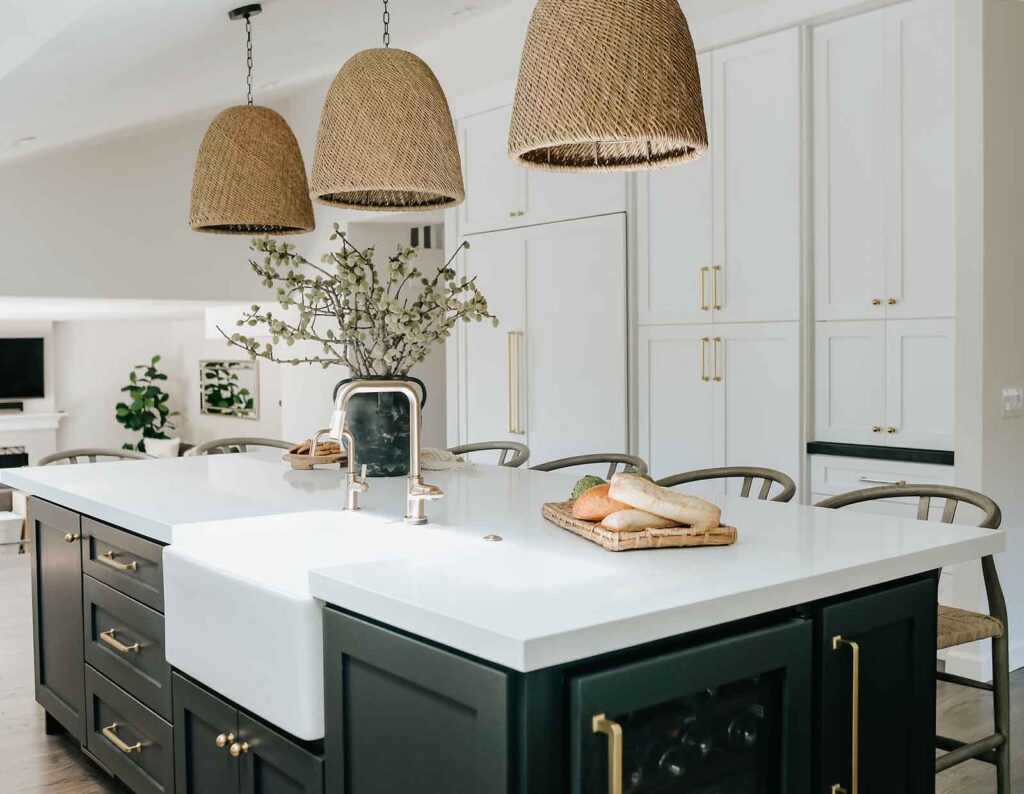
Quartz or Quartzite?
Quartz and quartzite are popular surfaces homeowners come across when searching for countertops. Despite sounding like similar surfaces, quartz and quartzite are different and distinct materials: quartz is a manmade, engineered surface, and quartzite is a natural stone mined from quarries all over the world.
The Confusion
The confusion between quartz and quartzite often lies in the fact that quartz geologically refers to a crystalline mineral containing silicon and oxygen. Natural quartzite slabs are made up of mineral quartz-rich sandstone. And quartz countertops are primarily made up of these crushed quartz minerals combined with a resin that holds it together. IRG’s Pental Quartz is made up of 90-93% quartz minerals and 7-10% resin.
In this article, we will further break down the differences between quartz and quartzite, as well as the pros and cons of each surface.
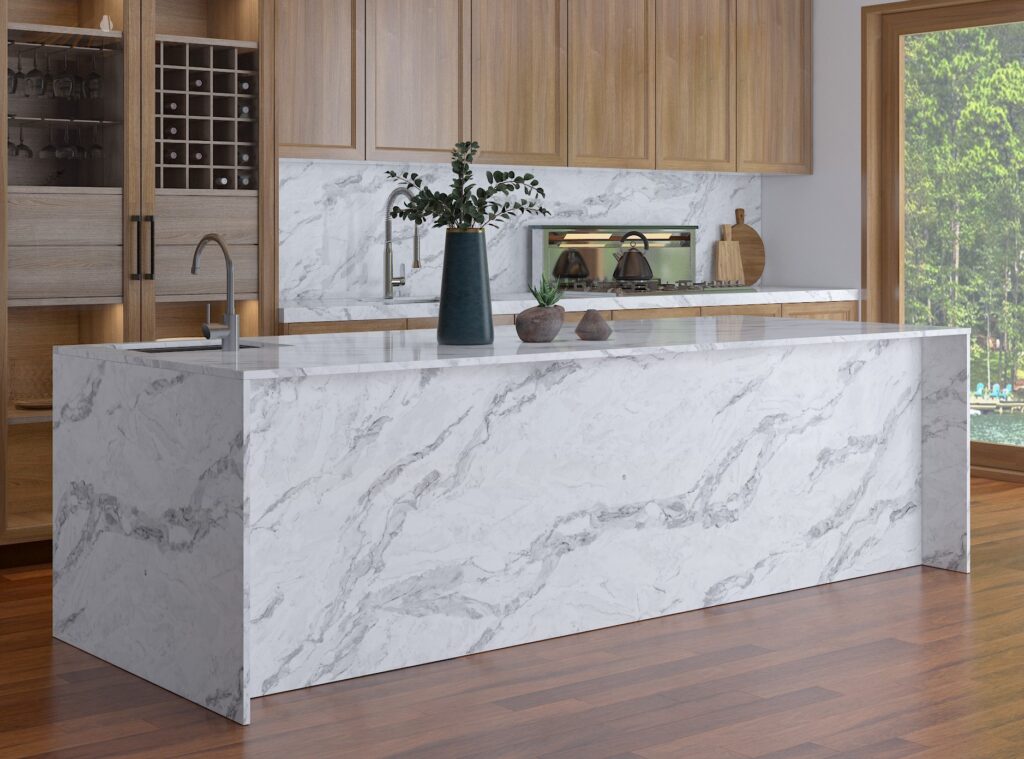
How to Tell the Difference
QUARTZ
Quartz has been growing in popularity as a countertop surface for the past ten years. Unlike granite and quartzite, quartz is non-porous and stain resistant. Because of this, there is no need to apply a sealer on the surface.
Easy maintenance is one reason some are partial to quartz, especially since it doesn’t necessarily need to be sealed. Quartz can resist staining more than natural stones like granite and quartzite, which must be regularly sealed for maximum protection. Unlike granite and quartzite, quartz is not recommended for use on fireplaces, directly behind stovetops and ranges, or outdoors. Due to the resin content within quartz, major drawbacks like its non-resistance to heat over 250°F and lack of UV resistance come into play. Therefore, it is advised not to place hot items directly from the stove or oven on the countertop. High heat exposure over time can lead to warping of the surface, so fireplace, stove backsplash, and steam shower applications should also be avoided. However, this may be a valuable trade-off since quartz usually costs less per square foot than quartzite. It is important to note that quartz is priced per slab since they come in conventional sizes, while slabs of natural stone come in a variety of sizes and are priced per square foot.
With the quartz craze going strong, manufacturers are constantly coming out with new lines and colors. Vein sizing and color offerings make quartz more distinguishable from quartzite. Quartz collections offer colorways that mimic marble‘s lighter tones, often with smaller veins and undertones not typically found in marble selections. They can also provide a pure white or medium grey background that is hard to find in quartzite naturally.
Clients, as well as various quartz brands, are focusing now more than ever on lighter-colored quartz with veining as opposed to the darker-speckled tones as a result, which were prevalent in the years past. The shift comes as no surprise, though. As we know, white marble has become a timeless staple for many kitchen countertops, erasing the general industry consensus from the past couple of decades that marble is for bathrooms and granite for kitchen countertops. This means we’ll see an increased interest in affordable white marble-looking surfaces, which engineered materials like quartz can provide.
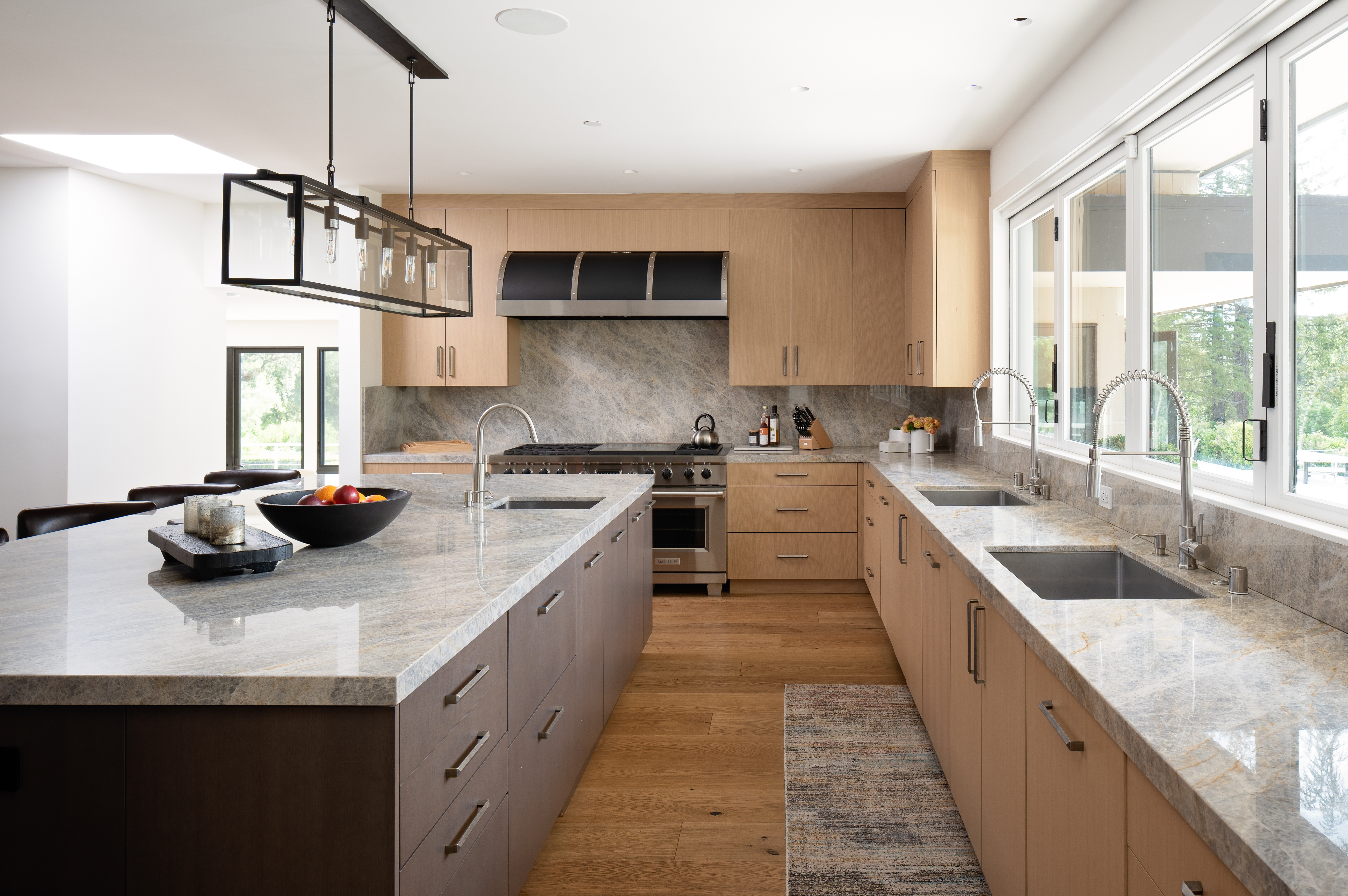
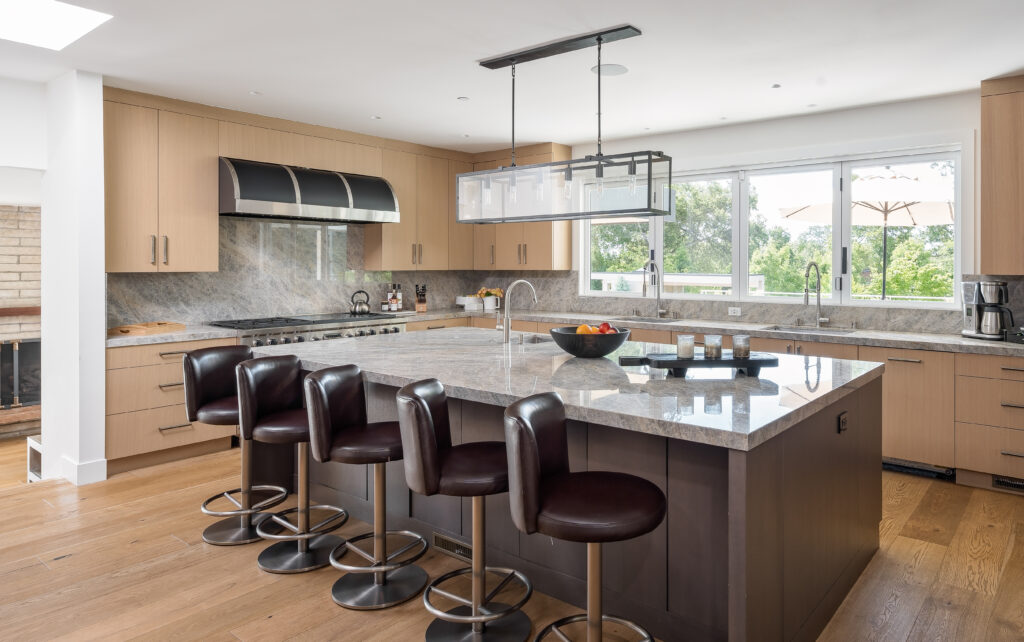
QUARTZITE
Made from sandstone found beneath the earth’s surface, quartzite is a natural stone that is quarried like granite and is just as sturdy. Not to be confused with engineered quartz, quartzite is more heat resistant and can be used safely around a fireplace or outdoor fire pit. Sometimes avoided because of its price point, quartzite can be thought of as a more budget-friendly alternative to marble, which is prone to etching, scratching, and staining. It also is extremely accommodating of detail-oriented installations; for example, the continued trend of large, edge-to-edge waterfall islands and other expansive kitchen surfaces can be harder to accomplish with quartz due to more recognizable seams.
The many textures and patterns of quartzite also set it apart from manufactured quartz. Its natural veining makes it prime for bookmatched installations, especially for those drawn to a more seamless look and organic feel. From freckled organic movement to caramel crystallized veins, quartzite is a product of earth’s purest form of natural beauty. Quartzite offers an expansive range of patterns, tones, and movement that can’t be manufactured. This makes quartzite highly sought after by designers and homeowners who value charm and precision that will withstand the test of time.
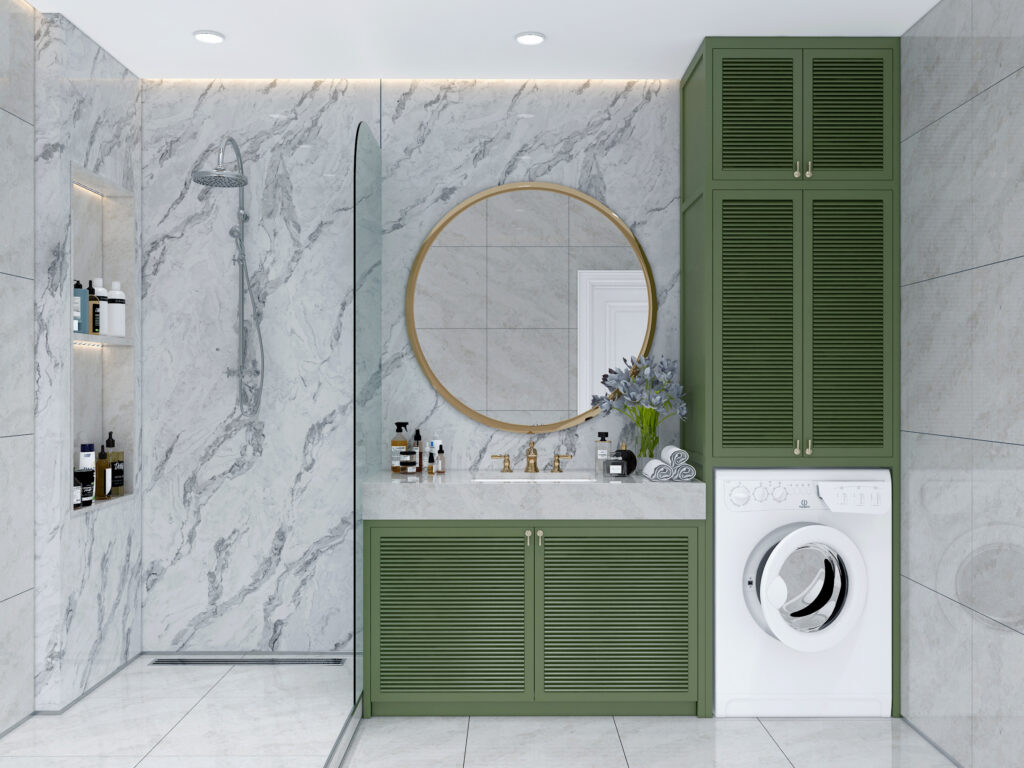
Trendy vs. Timeless
It doesn’t look like the quartz craze will end anytime soon. And we’re not complaining! There’s no doubt that quartz countertops are an affordable, durable, and modern option for kitchens and bathrooms. Going for a basic dark grey bathroom countertop? Quartz works great! Craving the look of white marble veining? There’s a quartz for that! However, if you find your design needs align with a more natural finish, quartzite might be the longer-lasting, low-maintenance, and cost-effective option when compared to quartz and marble.
Considering marble in your kitchen instead? Read our guide, To Marble or Not To Marble? That is the Question, which compares the pros and cons of marble applications with other natural and engineered surfaces.
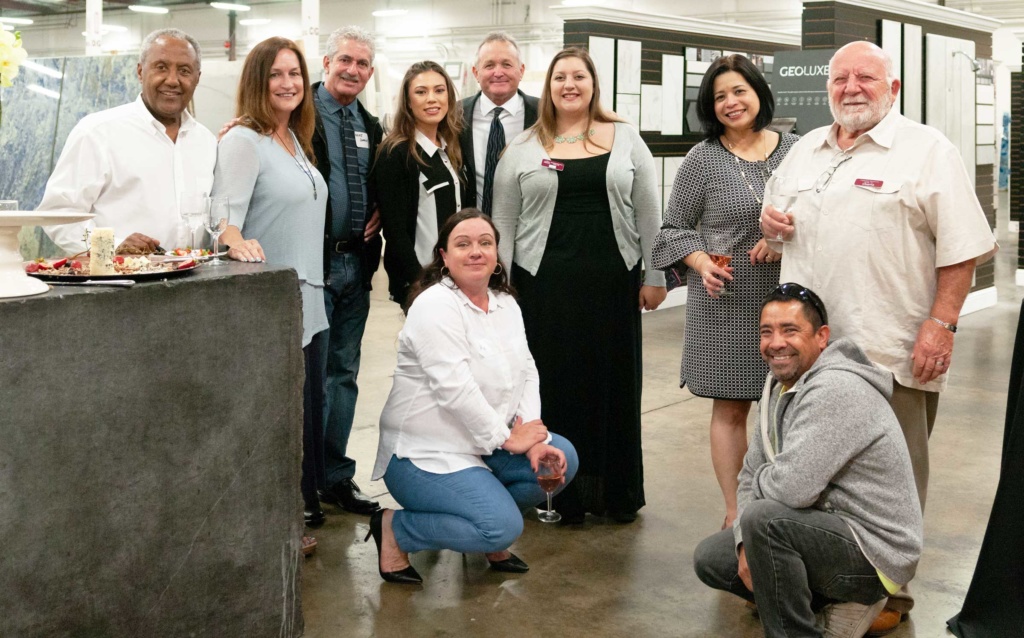
Carrying the largest selection of superior-grade, elegant, beautiful, and long-lasting natural stone available in the world today, including marble, granite, quartzite, and onyx, as well as an array of engineered surfaces, including quartz and porcelain slab, we welcome the opportunity to assist you throughout your decision-making process and design journey. Dedicated to helping you create the kitchen of your dreams, we invite you to visit our showroom and allow our experts and creative consultants to help you choose the perfect surface for your home. As unique as the individual, we treat every project with the utmost care, paying special attention to each client’s specific needs, budget, lifestyle, and style preferences. Call IRG at (415) 657-0280 or visit us at a showroom convenient to you in Brisbane, Dublin, or Sacramento.